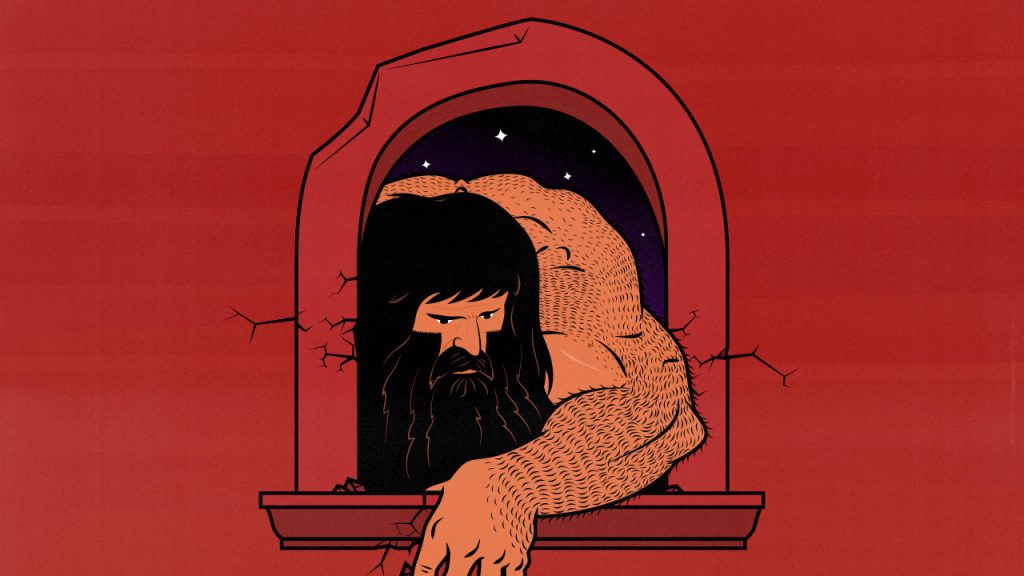
The Anabolic Window: Both Fact & Fiction
The “anabolic window” is an old bodybuilding term. A few years ago, it was pilloried by the evidence-based fitness community, and perhaps rightfully so—the requirements were woefully strict.
As so often happens, the backlash was overly harsh. There’s some merit to the idea of the anabolic window. The truth is that most people can benefit from taking advantage of it. That’s even more true for naturally thinner people.
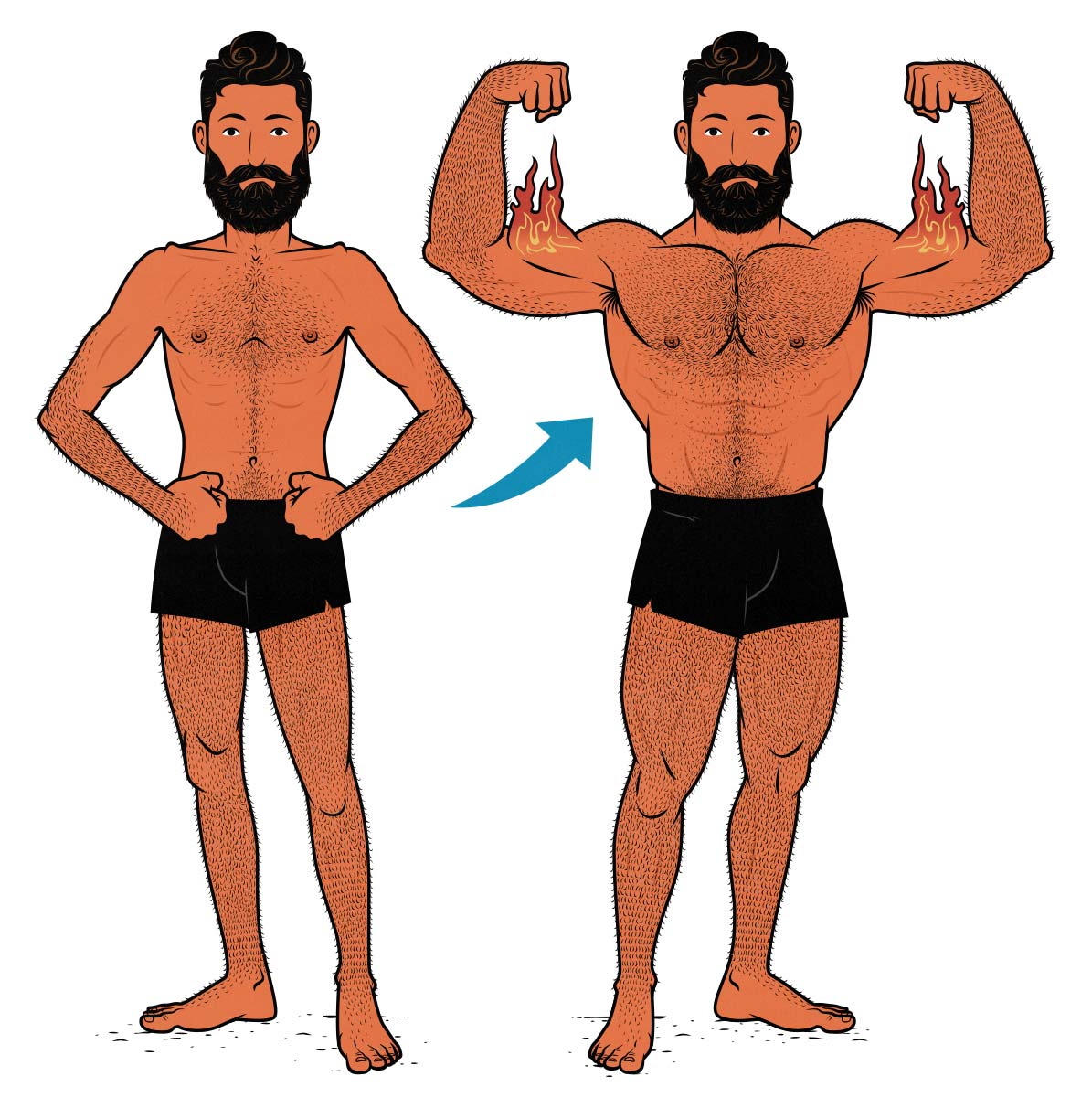
What’s the Anabolic Window?
The anabolic window is the period after lifting weights when your muscles are ready to shift from breaking down muscle (a catabolic state) to building muscle (an anabolic state).
The idea is that lifting weights stimulates muscle growth and that our muscles are the hungriest for protein immediately after training. That’s true. That’s exactly what hypertrophy training does, and that’s exactly when muscle growth spikes the highest (study).
In the classic bodybuilding era, the anabolic window was thought to last for about 30 minutes after training. In the modern evidence-based era, the window is understood to last for closer to 4 hours, opening 1–2 hours before working out and staying open for 1–2 hours afterwards (study, study).
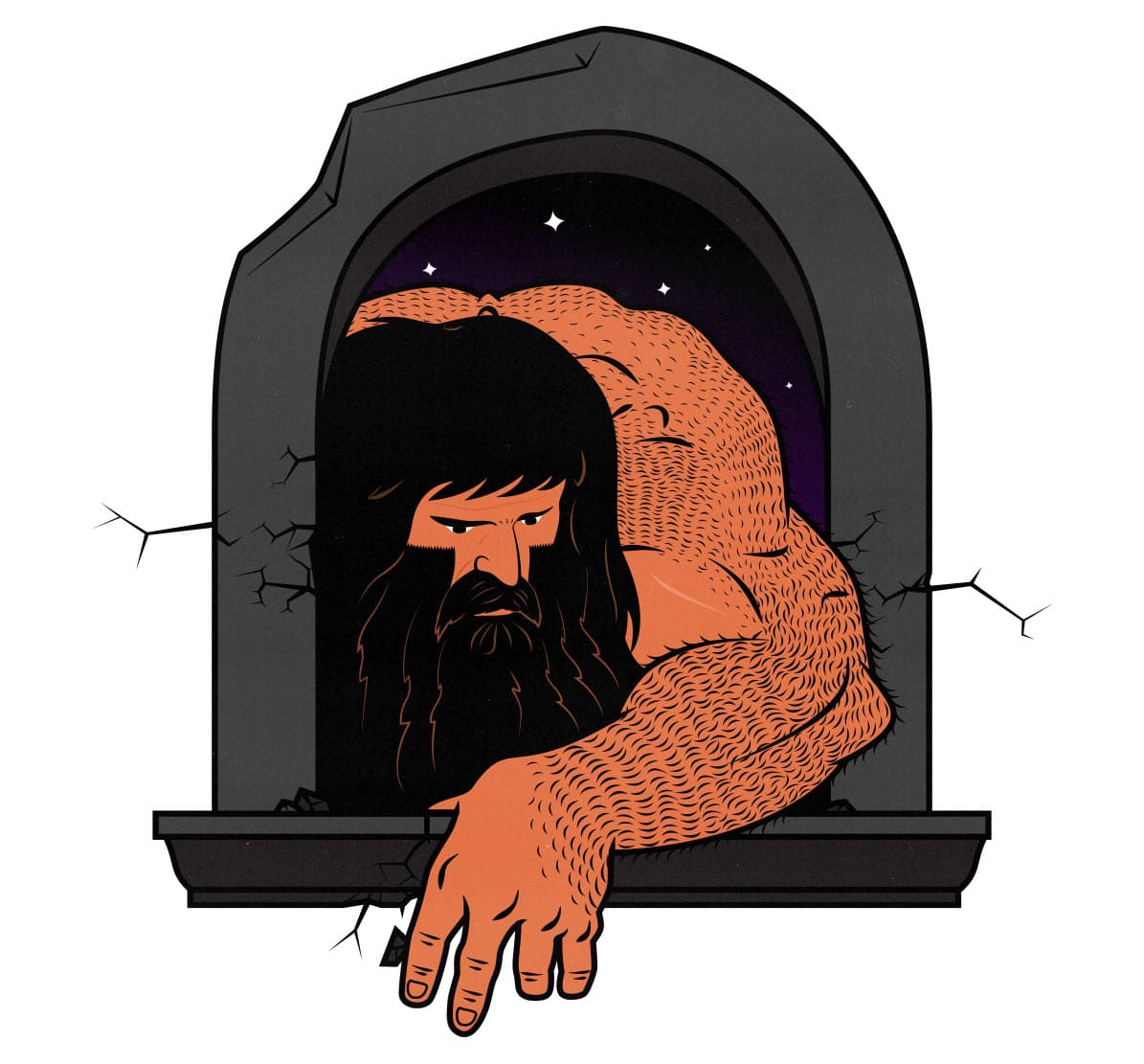
Also, keep in mind that if your workouts are challenging enough, you can build muscle fairly steadily for 2–3 days after working out. It’s important to eat enough food during that entire period (study). That’s less of a window, though. More of a doorway.
The Myth of the Anabolic Window
If you browse the more archaic corners of the internet or listen to the wisdom of greying bodybuilders, you’ll hear of the awesome power of the anabolic window—of how you have 30 minutes to chug a massive post-workout shake, stimulating a huge surge of muscle growth and warding off fat gain. Some of these shakes were enormous. It wasn’t uncommon for guys to pound back over a thousand calories. (More on that in a moment.)
These old bodybuilders weren’t wrong about the benefits, but they were wrong about the timing. The anabolic window is actually quite a bit more forgiving than that. If you eat a balanced meal every few hours, you’ll have a steady supply of amino acids, carbs, and fatty acids gradually digesting while you train. There’s never any great urgency to chug a post-workout shake.
The Truth of the Anabolic Window
There’s actually quite a bit of research showing that having a protein shake after working out increases muscle growth (study, study, study, study, study). If you’re working out before breakfast, if you aren’t eating steadily throughout the day, or if you’re falling behind on calories, then the benefits are even more dramatic (study).
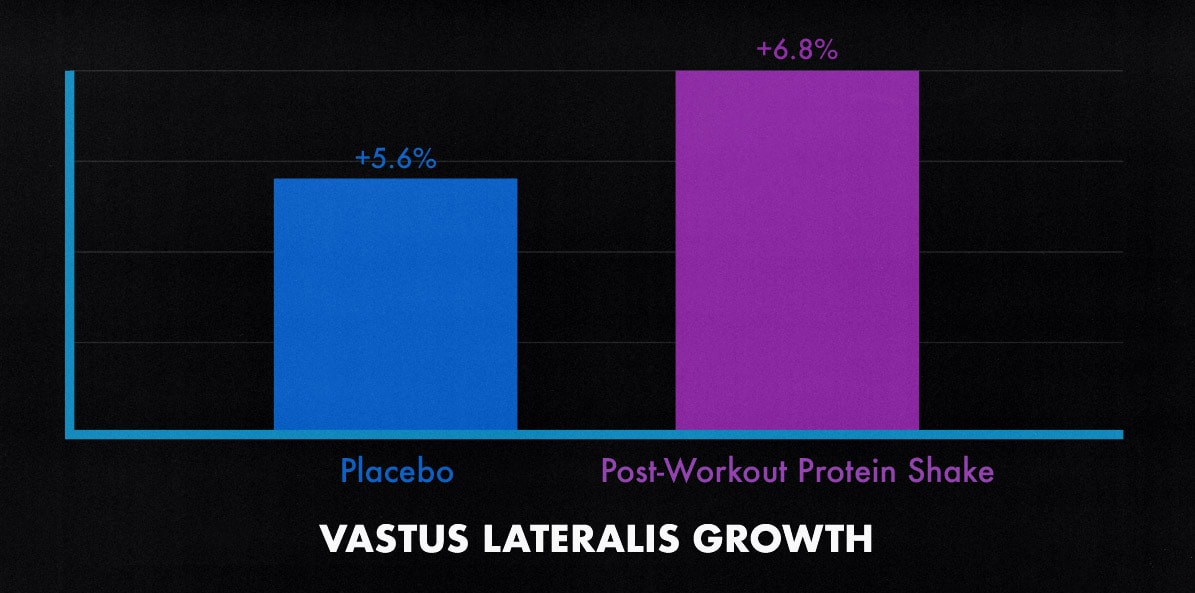
For example, Hulmi and colleagues gave some participants a protein shake during the anabolic window and other participants a zero-calorie placebo shake. The participants who had the protein shake gained 20% more muscle (study). After all, having a post-workout protein shake increases your protein and calorie intake, both of which improve muscle growth.
If you’re falling behind on calories, the anabolic window can be the difference between muscle loss and muscle growth. Working out can burn 300–400 calories. Most people can clamber out of that pit without much trouble, but many thinner people find themselves stuck there, especially if their workout causes them to skip or delay a meal. A thousand-calorie workout shake can bring you from a 500-calorie deficit to a 500-calorie surplus. That can save your bulk.
What to Eat During the Anabolic Window
There are two dogmas. The first dogma says to eat a balanced meal as you normally would, though perhaps somewhat larger. The second says to have a high-calorie, high-protein, high-carb, rapidly digestible post-workout shake.
Both approaches can work. It all depends on what you’re trying to do.
For Fat Loss
If you’re trying to lose fat, you’re probably struggling to control your appetite. You need to find a way to eat fewer calories more comfortably. Chugging a high-calorie shake is a poor use of your caloric budget. It’s a bad way to manage your appetite.
If you’re trying to lose fat, turn to more filling foods. Don’t chug a shake or rush home to prepare a feast. Instead, eat a balanced meal at your leisure, when you’re hungry, and never past fullness.
Make a meal that’s high in protein, rich in carbs, sufficiently fatty, and packed full of fibre. Think of meals like stir-fries, steak and potatoes, salmon with broccoli and rice, fiery chilis, and steaming stews. Add a side of green salad or fruit salad.
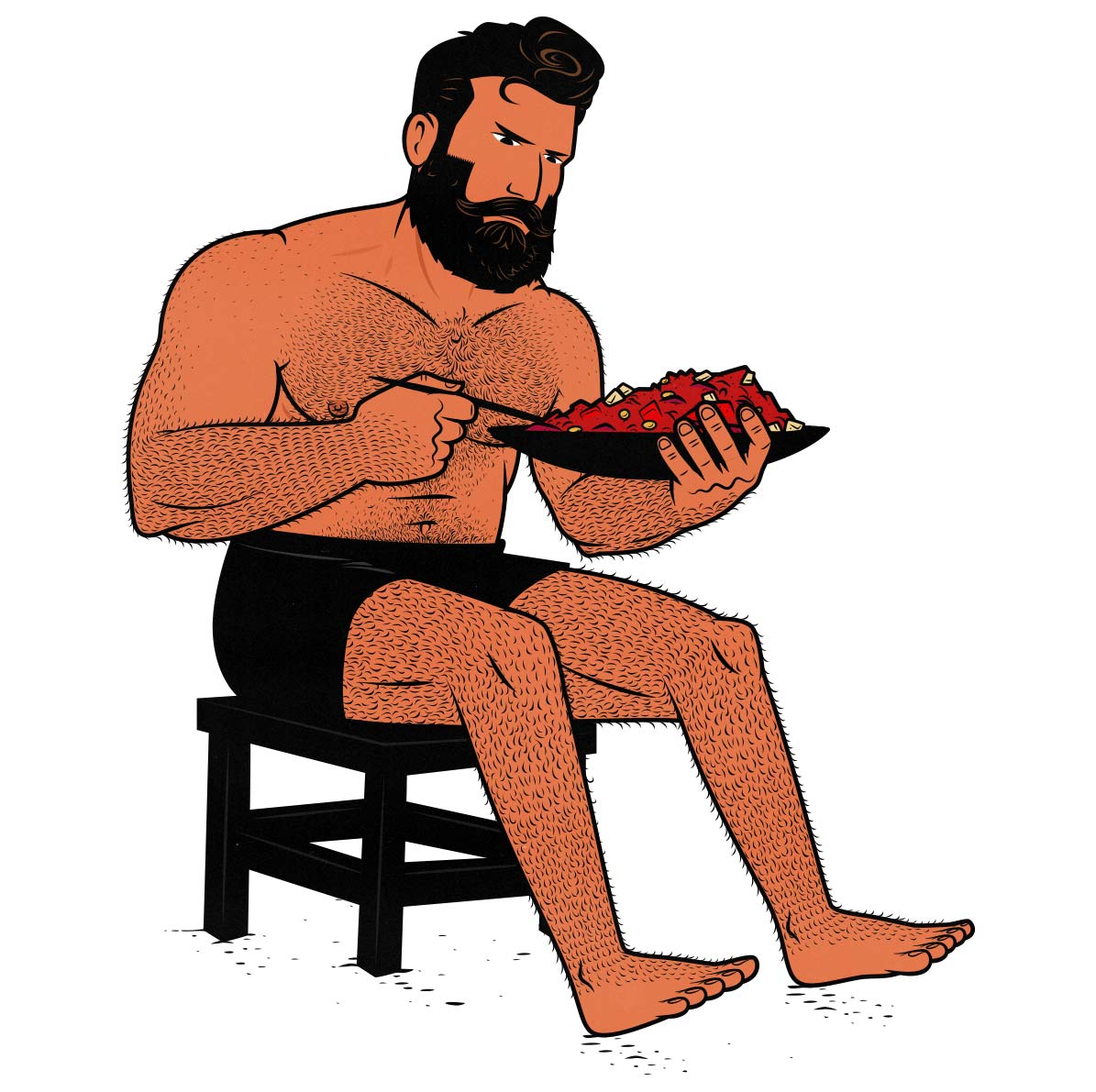
For Body Recomposition
If you’re recomping (building muscle while losing fat), you might hear of calorie cycling and carb cycling, where you eat more during the anabolic window and less on rest days. That won’t make or break your results, but it’s not a bad rule of thumb.
When you work out, you burn around 300–400 calories. You need to eat those calories back at some point. You may as well eat them during the anabolic window, ensuring you have enough nutrients available when your body is the most eager to build muscle.
If you’re a sparrowly eater or have a hummingbird’s metabolism, you might want to have a high-calorie post-workout shake or bulking smoothie after working out. If you have an over-eager appetite, a lower-calorie protein shake or balanced meal will probably serve you better.
For Muscle Growth
If you’re trying to build muscle and bulk up, the anabolic window is an opportunity to get ahead on calories. Since you’re intentionally trying to overeat, it can help to eat foods that digest quickly and easily, keeping your diet easy on your appetite.
This is where high-calorie shakes and smoothies become a godsend. I had 600–1,200 calorie shakes during my workouts when I was underweight. I would sip on them while resting between sets. I kept bringing those shakes to the gym with me until I’d gained 40 pounds. Then I eased back, switching from workout shakes to post-workout feasts.
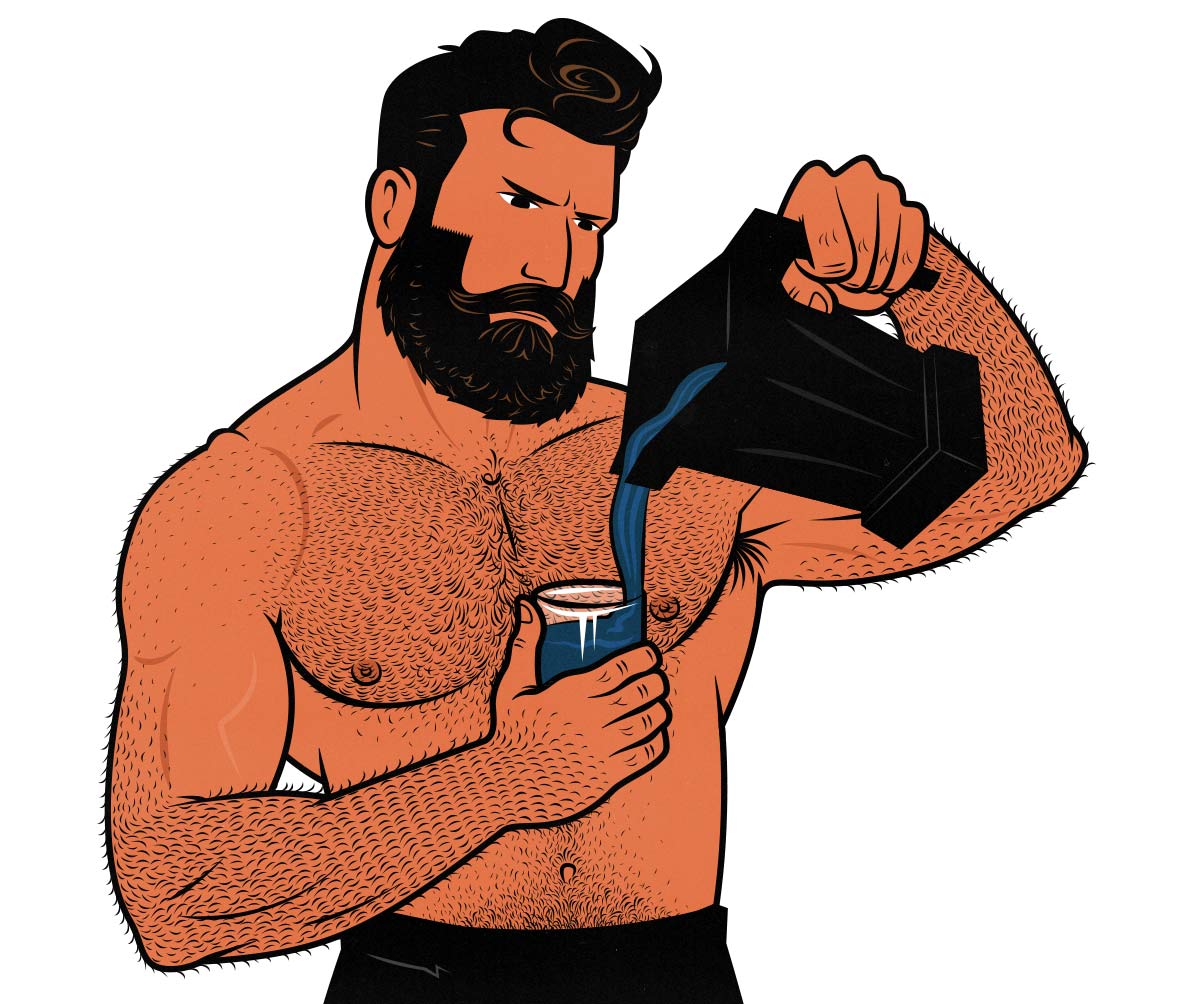
How to Make a Post-Workout Shake
If you’re making a post-workout shake, you want at least one scoop of protein powder, some powdered carbs (like maltodextrin or ground oats), and maybe 5 grams of creatine. Use quantities that get you up to your calorie goals.
For a simple homemade mass gainer, you could combine 60 grams of whey, 90 grams of maltodextrin, and 5 grams of creatine. That would get you about 55 grams of protein, 95 grams of carbs, and 600 calories.
Frequently Asked Questions
Should You Have BCAAs While Working Out?
Protein gets broken down into amino acids. Those amino acids are what we use to build muscle. Different protein sources digest at different speeds, but we can skip that entire process by supplementing with amino acids directly. That’s what branched-chain amino acids (BCAAs) are for. It’s a mix of amino acids thought to be ideal for building muscle.
Historically, drinking amino acids while training seemed like a good idea. If the anabolic window is narrow, then you have only a limited opportunity to feed your muscles. The quicker a protein source digests, the faster you can flood your muscles with amino acids.
However, the anabolic window isn’t so narrow as that. You can use any protein source, with whey protein being the most popular.
Should You Have Whey Protein After Working Out?
Early research supported the idea of consuming quickly-digested protein after training, with whey protein outperforming casein (meta-analysis, study). Other papers called those findings into question, making the overall body of evidence too murky to draw any strong conclusions (study, study, study).
I think what’s happening is this: it’s crucial to consume enough protein overall, and it helps to have protein within 1–2 hours of working out, but the type of protein you consume doesn’t matter very much. So, if you want to buy a supplement, whey is the most obvious choice. But if you prefer something else, that’s fine, too.
Should You Have a Protein Shake Before or After Working Out?
It takes protein a little bit of time to be broken down into amino acids, and it takes those amino acids some time to flow into your muscles. It might make sense, then, to have a protein shake before working out.
However, there’s no great rush to feed your muscles immediately after training, especially if you ate 1–2 hours before your workout.
So, yes, you should have a protein shake before or after working out. But we can do a bit better than that:
- If you’re working out before breakfast, have a protein shake before working out.
- If you’re hungry while lifting, have a protein shake (or a snack).
- If training on a full stomach feels bad, eat 2 hours before training, then have a protein shake afterwards.
- If you’re struggling to eat enough calories to gain weight, have the protein shake before your workout. That way, you’ll be ready to eat again sooner.
Do Cardio Workouts Have an Anabolic Window?
Cardio doesn’t stimulate very much muscle growth (anabolism), so there’s no real anabolic window to speak of. You need to eat enough protein, but you don’t need to stress about the timing of it.
However, cardio is a metabolic fireplace. If you’re a 180-pound guy going rucking for 2 hours, you can burn close to 1,500 calories. That’s a devastating number of calories to lose. If you’re trying to build muscle, you need to eat back the calories you burn, lest you fall into a deficit.
You can get your calories from regular meals, from smoothies, or from post-workout shakes. If I’m doing long, sweaty cardio sessions outside, I’ll often have some Gatorade to help me keep up with calories, water, and electrolytes. Still, you might need more.
Summary
If you’re already eating every few hours, eating enough protein, and eating enough calories, then you don’t need to worry about the anabolic window. You can still have a post-workout shake, and it will still help, but not more than a meal would. Relatively few people satisfy all these requirements, though.
If you’re having trouble eating enough food to build muscle, if you’re eating less than 0.7 grams of protein per pound bodyweight per day, or if you’re falling behind on your meal schedule, then the anabolic window is a glimmering opportunity to build more muscle. Have a post-workout shake, a smoothie, or race home to prepare a grand feast. You need those nutrients. They can make all the difference.
Most regular people who lift weights can build more muscle by having a protein shake after working out. It increases their calorie and protein intake, and it satisfies the anabolic window. You could get those same benefits through your diet, but most people don’t. Having a protein shake is popular for a reason. It’s easy and it works.
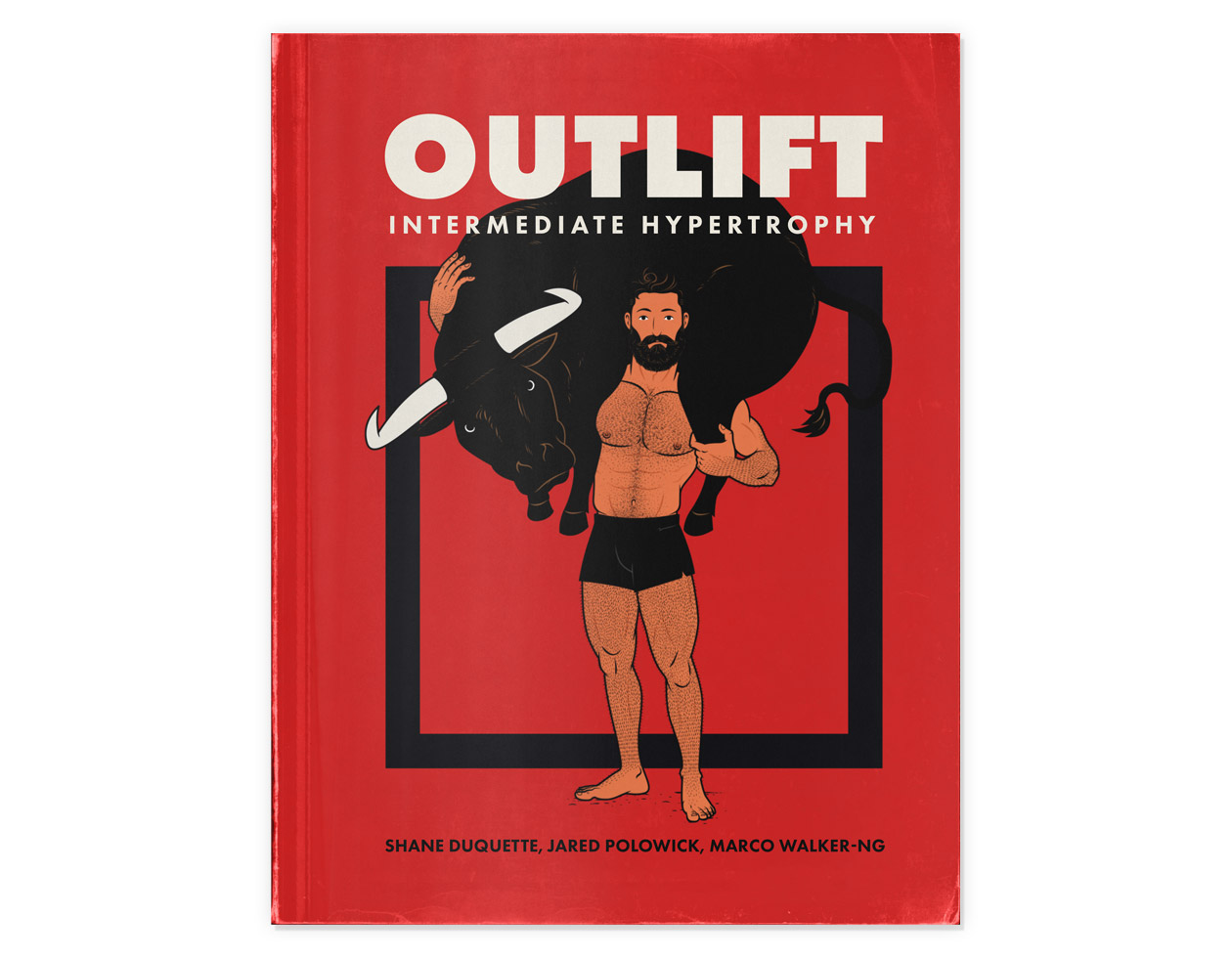
If you want the latest muscle-building research and methods, we have a free newsletter. If you want a full foundational bulking program, including a 5-month full-body workout routine, diet guide, recipe book, and online coaching, check out our Bony to Beastly Program (for men) or Bony to Bombshell Program (for women). If you want a customizable intermediate muscle-building program, check out our Outlift Program.



Good stuff!
Thank you, Nay.
Thanks for the article Shane. Great info as always.
I have been using the nutrient guidance in John Berardi’s “Scrawny to Brawny” that advocates for pre, during, and post workout shakes with 0.8g/kg carbs and 0.4g/kg protein in each shake. So if I’m 70kg that’s 56g of Dextrose (what I’ve been using, but I haven’t put that much in yet as it is a gross amount of sugar) and 28g whey. By his guidance, you would be consuming 168g of pure glucose in a very short period of time. Is there anything in the current literature about optimal carb dosage?
I love that Scrawny to Brawny book! I read that when I was first struggling to bulk up. It was the only muscle-building book that felt like it was written for a skinny guy like me. John Berardi’s pre-workout, intra-workout, and post-workout shake recommendations are how I wound up sipping those giant 1,000+ calorie shakes while training.
I think Dr. Berardi’s recommendations are somewhat outdated. Having 3 separate shakes can work. There’s nothing wrong with that approach. But anabolic window isn’t so narrow as that. You might be able to save some hassle by consolidating the shakes. You could also swap out the pre-workout and post-workout shakes with real food, keeping just the intra-work shake.
If you swap your dextrose for maltodextrin, you’ll replace the sugar with starch, cutting back on the sickening sweetness. I think you’ll much prefer it.
Carbs and bulking go well together. Getting around 40–60% of your calories from carbs tends to be ideal. You don’t need to get those carbs from powders, but you can. That’s the idea behind mass gainers. You could also get starchy carbs from bananas, oats, rice, potatoes, and so on. A more nutritious approach is to blend up a big smoothie instead of chugging a giant mass gainer, but gainers do work.
Thanks!
He also advocates for low carb meals outside of the anabolic window so as to improve insulin sensitivity/glucose uptake/anabolism. What are your thoughts on that kind of carb cycling?
Carb cycling seems to be most useful for athletes who are working out multiple times per day. Having plenty of carbs after training helps muscles fill back up with glycogen, readying them for the next workout. Beyond that, it hasn’t really panned out in the research. It doesn’t seem to help with muscle growth or fat loss. Most studies that control for overall macros don’t find much benefit (or downside) from nutrient timing.
I consulted with a couple of insulin sensitivity experts for another article. According to them, maintaining good insulin sensitivity is more about lifting weights, building muscle, exercising in general, keeping healthfully lean, and eating a balanced diet. I’m not sure carb cycling would have any effect.
I personally like to have bigger, higher-carb meals surrounding my training. I don’t avoid carbs outside of the anabolic window, though. I try to have balanced meals.
I’m also not sure if Dr. Berardi still recommends carb cycling. That book is almost 20 years old now. He may have updated his stance.
Thanks again for the great answers. Yes, that book is getting really long in the tooth. I still like the block of wave progression though.
One of the reasons I still go back to that book is how useful I find the examples of what to eat in a training and non training day. It makes it easy to know what to eat to get from 2900-4000 calories. As a skinny guy, as we all know, eating enough is one of the hardest parts. He walks you through adding in a few extra hundred calories as the weeks go on. I am not an imaginative guy when it comes to food, so I like it when I can find something that tells me what to eat. I will never make multiple recipes in a day so I appreciate a simple plan with simple ingredients repeated throughout the week. Also with the macro breakdown so I can try to replicate it if I can’t eat the exact same thing.
Sorry, kind of a tangent from the anabolic window, but something that you could consider for nutrition information to support your programs. I’m currently on Phase 4 of Bony to Beastly. Money well spent. My thanks to you and Marco.
All the best,
-Derek
I’m still a fan of it, too. And even if there isn’t a special advantage to cutting back on carbs on rest days, it’s still a perfectly good way of bulking.
What’s your favourite recipe from the Scrawny to Brawny book?
Right now we have recipes with the macros calculated out, but you pick and choose to make them into a diet, and you’re free to keep your own meals. We give examples of daily meal plans, but if I understand you right, you’re thinking it could be helpful to build out weeklong meal plans? That’s a pretty good idea. I’ll dig out the book and see how he did it.
Yeah, I don’t like cooking multiple meals in a day, either. When I was a bachelor, I would cook up a big pot of the chili recipe on Sundays. That would take care of my dinners (and often lunches) for the week. I’d supplement that with simpler meals like muesli cereal and greek yogurt with frozen berries. I’d increase serving sizes or add snacks as my calorie needs increased.
Woot! Glad you’re liking the program!
Great article Shane. How long do your shakers keep a smoothie cold? Could I make one in the morning to drink late afternoon?
Thanks, Paul!
Hm. I was imagining bringing a cold smoothie to the gym, working out, and then drinking it a couple of hours later. It will definitely still be cold for that.
BlenderBottle claims the double-wall insulation can keep drinks cold for a full day. I’m skeptical of that, though. I filled up the shaker with some cold water and a couple of ice cubes. I’ll check on it in 10 hours. If it’s still cold, your smoothie should be able to make it. I’ll let you know either way.
After 10 hours, the water isn’t ice cold anymore, but it’s still significantly colder than room temperature. I think your smoothie will still be refreshingly cool. 10 hours is probably pushing the limits, though.
Wow thanks for conducting the experiment Shane, that’s 5-star customer service 🙂
My pleasure!
(Replying to your last reply)
I don’t think I really made any of the recipes from the book. I was all about the simple meals, like eggs and egg whites, yogurt and whey, salads with chicken, cheese and nuts (on the low carb days). I just end up eating more leftovers from dinner the night before on the training days because my family eats pretty high carb normally. Repeat ad naseum.
I have a wife and two kids, so the fridge and freezer is already full of food, which makes it hard for me to make food ahead. I also try to balance eating what is suggested in the book with what my wife makes for dinner so I’m not always making myself a separate meal.
Thanks again for the great content. I’ll be moving on to OutLift once I’m done with b2B.
Gotcha. It’s similar for me. My wife likes to make a new dinner every night, so I’ll eat that instead of cooking/reheating a big pot of something.
Awesome. I think you’ll like it 🙂